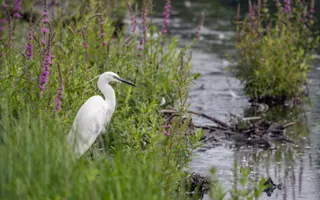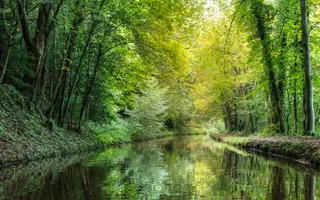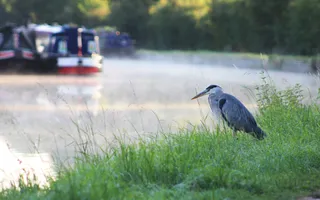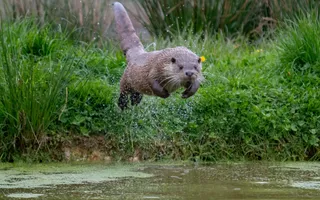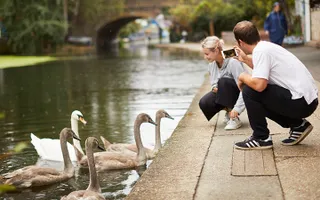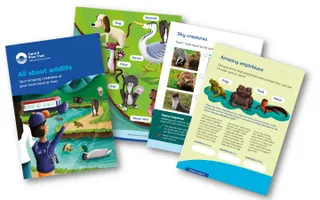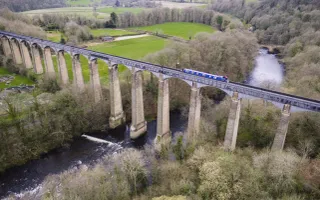Laura, I’d have to say habitats like this are really special for me. There’s something that really connects you to them and gets you excited because it’s home to so many different types of species.
Absolutely. I mean, being beside the water is just so calming anyway. And then, when you have a day like today when the sun’s out, the birds are singing, it’s just such a beautiful place to be. And where we are here, we’ve got these softer bank habitats, which are fantastic for species that are in decline, like the water vole, who use their front teeth a bit like a JCB to dig out the burrows, which I just think is so cool that they’re just there with their little teeth digging away. And then we’ve got these fantastic reed beds as well which are really great in the middle of the summer when the reed and sedge warblers come. They’ll build their basket-y nests in there. And so you can walk along the towpath and see these water voles and the birds. It’s just such a beautiful place to be.
It’s amazing, isn’t it? Because I can walk along reed beds and things, and you don’t necessarily see the animals. But that’s not always the most important thing because if you could hear them or some sort of evidence that they’re there, that’s really exciting because it’s the mystery of what’s going on in those reed beds. It’s like a drama for wildlife that you’re only getting a short glimpse of. And it’s so important to protect habitats like that.
Absolutely, and it’s really important that we try and bring these softer bank habitats into the cities where you’ve often got sort of steel-piled sides to the canals, or it might even be concrete. But we’ve got these floating reed systems that we’re going to be bringing some more in, and that will allow the plants to grow, and then the insects will come in and forage on the plants. And then, hopefully, we can bring more and more wildlife into the city so that people can connect with it.
Absolutely, because the wildlife is out there; it’s just getting it into the hearts of the cities and hearts of people’s minds as well.


